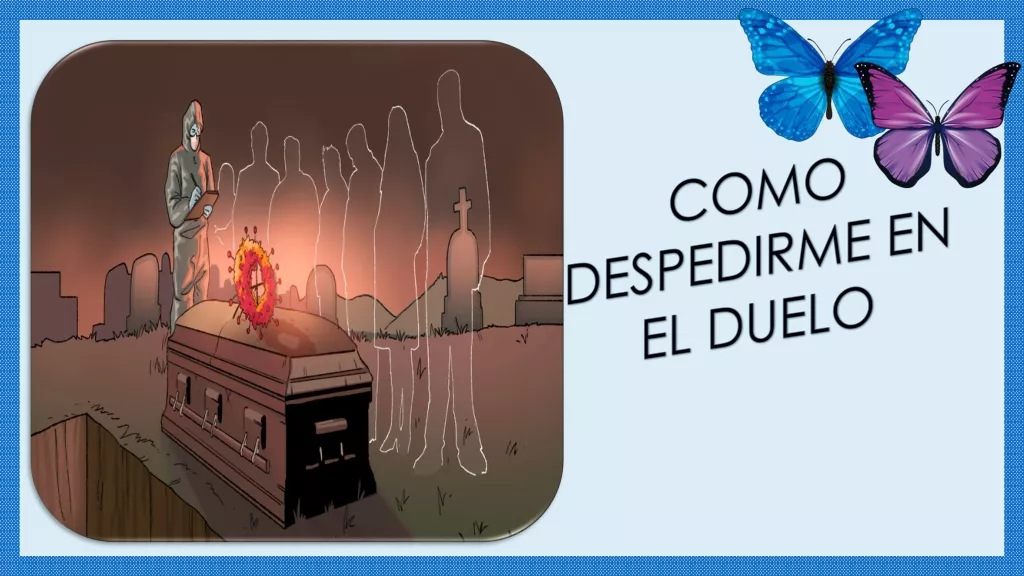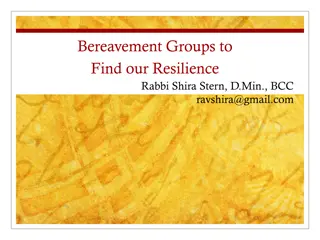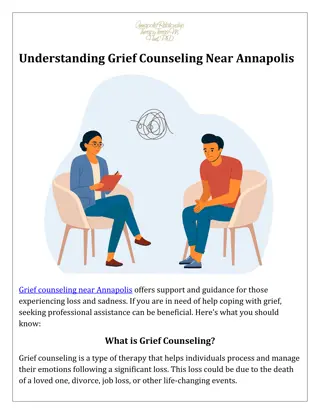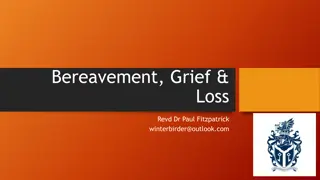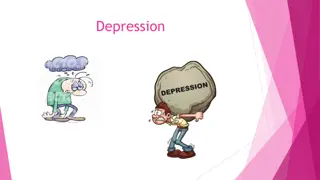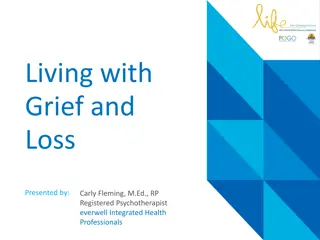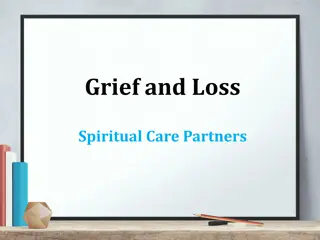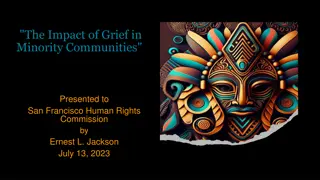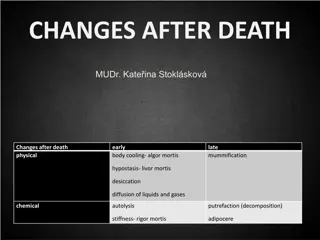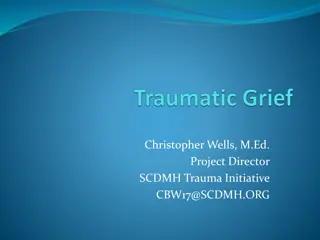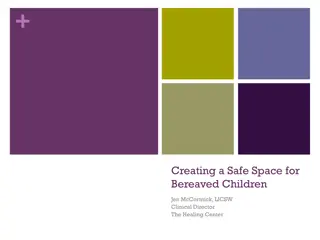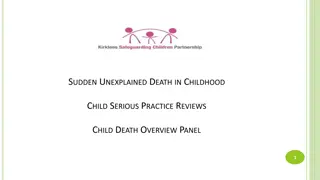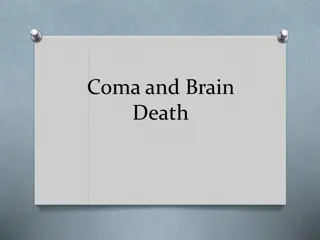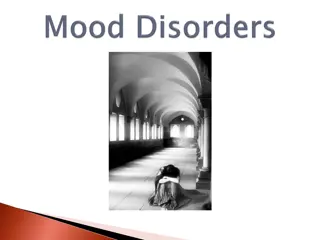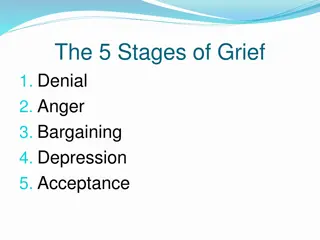Death, Grief, and Cultural Perspectives
Delve into the study of death and dying, the pervasiveness of denial, and the psychological responses to loss. Understand the cultural significance of mourning, the impact of death on individuals and societies, and the various ways different cultures cope with grief and bereavement. Reflect on the inevitability of death and the importance of preparing for the hereafter.
Download Presentation

Please find below an Image/Link to download the presentation.
The content on the website is provided AS IS for your information and personal use only. It may not be sold, licensed, or shared on other websites without obtaining consent from the author.If you encounter any issues during the download, it is possible that the publisher has removed the file from their server.
You are allowed to download the files provided on this website for personal or commercial use, subject to the condition that they are used lawfully. All files are the property of their respective owners.
The content on the website is provided AS IS for your information and personal use only. It may not be sold, licensed, or shared on other websites without obtaining consent from the author.
E N D
Presentation Transcript
Pervasiveness of denial Denial leads to living in the here and now What plans do you have for the hereafter? [e.g., living will, life insurance, burial plot]
Study of death (and dying) is called thanatology Death is inevitable The statistics on grieving are impressive: one out of every one person dies [George Bernard Shaw] Death is clearly a biological event Physical Locus Religious / spiritual issues come up a LOT with respect to death and dying
My childhoods home I see again, And sadden with the view; And still, as memory crowds my brain, There s pleasure in it too. Near twenty years have passed away Since here I bid farewell To woods and fields, and scenes of play, And playmates loved so well. Where many were, but few remain Of old familiar things But seeing them, to mind again The lost and absent brings. The friends I left that parting day, How changed, as time has sped! Young childhood grown, strong manhood gray, And half of all are dead.
Death more visible Death more common Mourning period more obvious and culturally defined [ custom of seclusion ] Shorter Life Span
A. Everyone has the painful experience of loss B. Our culture poorly understands, poorly responds to grieving individuals C. The psychological responses to grieving are fairly common across a wide range of individuals, providing a kind of model by which we can analyze another s grieving D. Understanding the pattern of these psychological responses, this pattern can be appliedto other little deaths (e.g., death of a relationship, job loss)
Anniversary Reactions Frozen Grief / Ambiguous Loss Mistreatment of the Deceased Mummification Bereavement Overload
A. Some general comments -What is normal differs over time (should it?) -What is normal differs from culture to culture (e.g., Asian denial of death) B. Common cognitive and behavioral reactions to grief -Preservation of person s personal things [e.g., shrines ] -Attachment to physical reminders (especially important with children, who are concrete operational rather than abstract) -Dreams of the deceased
-People experience a wide range of emotions, especially early on in grief process -People go through a discrete set of stages, though not necessarily in linear fashion -Stages can be applied to other LOSSES -Stages can reveal where bereaved is STUCK
1. Shock/Denial 2. Fear 3. Longing 4. Anger 5. Depression 6. and finally Acceptance
Intensity of relationship Mental health (e.g., independence, security) Length of relationship Age of deceased Uniqueness of relationship Circumstances of death [e.g., preventability of death] [e.g., anticipatorygrief vs. sudden death ] Perceived closeness Religious beliefs Age of bereaved
A. Some Thoughts Children s initial exposure often result of a pet dying Children have a very hard time understanding death Children: ages 0-5 death equated with departure, seen as temporary (i.e., sleep) ages 5-9 death can be undone; might not be permanent B. Development of children s understanding of death: Death is permanent, universal, nonfunctional
C. Typical questions children ask 1. Why do people die? (why did X die?) 2. Are they being punished? 3. Where do they go? 4. When will they return? 5. Will YOU die? D. Suggestions: -Do not use euphemisms [ Grandma is in God s house ] -It is not necessarily bad to take child to funeral service -Be open and honest with children -Plan on revisiting the issue (again and again) -Remember the stages if grief, because you will see them evidenced in your children -LISTEN LISTEN LISTEN
1. It is ok to not want to let go right away 2. You will never completely let go 3. How bad you feel should not be confused with how much you loved them 4. It is good to talk to others and let others talk to you [ Dear God ] 5. Don t be surprised if others react differently to this person s death than you do
6. Be patient with yourselves and others 7. Do not be surprised that a death will affect many areas of your life 8. What is normal and abnormal is more HOW LONG rather than WHAT 9. Plant seeds of hope 10. Start within and work out as far as possible


